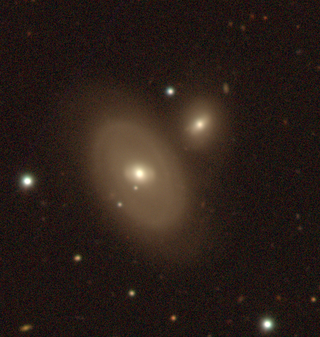
NGC 37 is a lenticular galaxy located in the Phoenix constellation. It is approximately 42 kiloparsecs in diameter and about 12.9 billion years old.
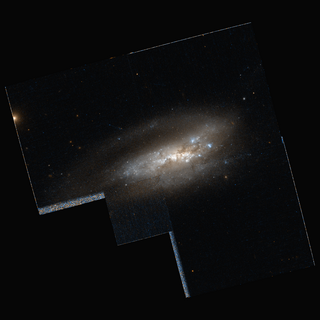
NGC 6239 is a barred spiral galaxy located in the constellation Hercules with a distinct core. It is designated as SB(s)B in the galaxy morphological classification scheme and was discovered by the German-born British astronomer William Herschel on 12 April 1788. The galaxy is approximately 42 million light years away from Earth.

LEDA 135657 is a distant low surface brightness spiral galaxy located about 570 million light-years away in the constellation Cetus. It has an estimated diameter of 97,000 light-years.

NGC 5910 is an elliptical galaxy located about 540 million light-years away in the constellation Serpens. It was discovered by astronomer William Hershel on April 13, 1785. NGC 5910 is also a strong radio source with a conspicuous nuclear jet.

PGC or LEDA 2933 is a faint dwarf irregular galaxy in the Sculptor Group. It can be seen in the southern constellation Phoenix. According to measurements, the galaxy is located 11.15 million light-years away.

NGC 3110, known as NGC 3122 and NGC 3518 is an active spiral galaxy in the Constellation Sextans. It contains extensive Hubble-type Sb star-forming regions, and is located south of the celestial equator. It is estimated to be 218 million light-years from the Milky Way and has a diameter of around 100,000 ly. Together with PGC 29184 it forms a gravitationally bound galaxy pair. Located in the same area of the sky is the galaxy IC 589.
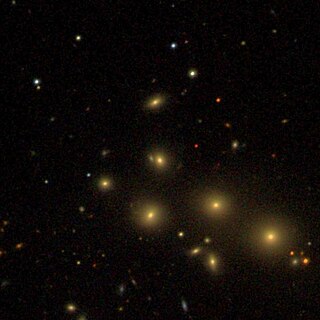
NGC 3647 is a small elliptical galaxy in the Leo constellation. The galaxy was first discovered on March 22, 1865 by Albert Marth who was a German astronomer. It is approximately 747 million light-years away. Due to its close proximity to five other elliptical galaxies, there was a bit of confusion for Marth to identify which object is NGC 3647.
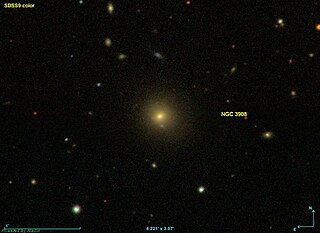
NGC 3908 is one of the furthest NGC objects. It is an elliptical galaxy located 1.2 billion light-years away in the Leo constellation with an estimated 280,000 thousand light-years across in diameter. It was discovered on April 10, 1885, by Lewis Swift, who found the object too faint for the naked eye to see. The identification of the celestial object observed by Swift is uncertain. The coordinates place it approximately 7.5 arcminutes south-southwest of a galaxy previously listed, potentially identifying it as PGC 36967. However, astronomers Corwin and Gottlieb argue that the object is much fainter than Swift's descriptions suggest, indicating it may have been too faint for him to observe. Although the right ascension aligns with another of Swift's discoveries on the same night, the discrepancy in declination is notably larger. It remains unclear if PGC 36967 is NGC 3908, and it is equally probable that Swift's observed object is "lost," with any nearby galaxy merely coincidental to Swift's original position. Due to its relatively large size, NGC 3908 is considered a brightest cluster galaxy, a BCG.
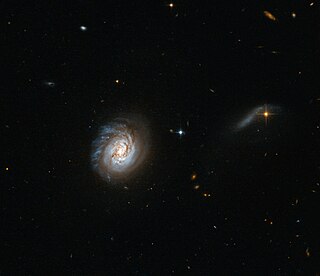
MCG -03-04-014 or PGC 4167, is a spiral galaxy located 450 million light-years in the constellation of Cetus. MCG -03-04-014 is classified as a luminous infrared galaxy, meaning it has high star-formation regions. MCG -03-04-014 has a galactic center that is obscured by dust lanes and presents an abundant supply of molecular gas. The reasons behind the luminosity of this galaxy are debated among astronomers. Some attribute it to recent starbursts, while others point to activity in the galaxies' supermassive black holes. It is also considered that both factors may contribute. The exact cause remains uncertain.

PGC 2046648 is a large spiral galaxy located 1.2 billion light-years away in the Hercules constellation. Its diameter is estimated 260,000 light-years, meaning PGC 2046648 is much larger compared to the Milky Way galaxy.

PGC 65543, is a spiral galaxy, with extensive star forming regions, located in Indus. It is 650 million light-years away from the Solar System and approximately measuring 90,000 light-years in diameter. The tidal interactions from certain galaxies which PGC 65543 is moving towards to, have caused it to get distorted. Its star-forming gas and dust are dynamically stripped by ram-pressure and formed into tendrils that stretch outwards, thus gives an appearance of a jellyfish galaxy.
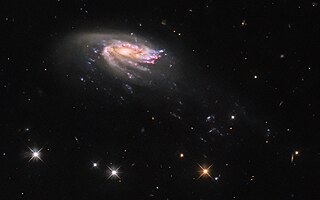
PGC 1228197 known as WINGS J211347.41+022834.9 and JO206, is a large spiral galaxy located 700 million light-years away towards the constellation of Aquarius. The galaxy is estimated to be at least 160,000 light-years in diameter, making it somehow bigger than the Milky Way. With a radial velocity of 15,226 kilometers per second, it is slowly drifting away.

PGC 4789 is a distant barred spiral galaxy in the Pisces constellation. It is located 675 million light-years from the Milky Way and seems to be interacting with its neighboring galaxies. it is known as Arp 48 in the Atlas of Peculiar Galaxies catalogue. In this class, PGC 4789 falls into galaxies that have at least one low surface brightness companion.

UGC 934, known as PGC 5085, is a large spiral galaxy about 470 million light-years away from the solar system. It is located in the constellation of Pisces and about 285,000 thousand light-years in diameter. With its neighboring galaxy PGC 212740, they together form Arp 70, the 70th number in the Atlas of Peculiar Galaxies which was created by Halton Arp. In this class, they fall under spiral galaxies that have a small high-surface brightness companions.
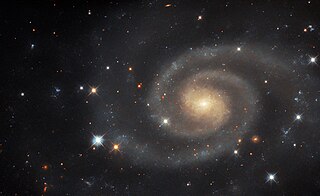
UGC 11105, also known as PGC 61361, is a relatively nearby spiral galaxy located 109 million light-years away in the Hercules constellation. The galaxy is outshone by bright stars in the foreground. From the perspective on Earth, the Sun is 14 thousand trillion times brighter as compared to UGC 1105, if we to calculate the apparent magnitude for both objects. It is a possible active galactic nucleus candidate, according to SIMBAD.

IC 5337 or JW100, is a spiral galaxy located 800 million light-years away from the Solar System in the constellation of Pegasus.

NGC 5008 is a massive barred spiral galaxy located in the Boötes constellation.

NGC 3750 is a lenticular galaxy with a bar located in the constellation of Leo. It is located 450 million light-years from the Solar System and was discovered by Ralph Copeland on February 9, 1874.

NGC 3754 is a small barred spiral galaxy located in Leo. It is located 447 million light-years away from the Solar System and was discovered on April 5, 1874, by Ralph Copeland.
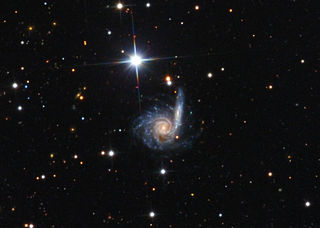
NGC 6365 is a pair of spiral galaxies in the constellation Draco. It consists of two galaxies, PGC 60174 to the south, and PGC 60171 to the north. These two galaxies are also designated respectively by the NASA/IPAC database as NGC 6365A and NGC 6365B. This pair of galaxies was discovered by German astronomer Lewis Swift in 1884.



















